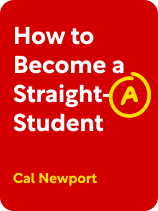

This article is an excerpt from the Shortform book guide to "How to Become a Straight-A Student" by Cal Newport. Shortform has the world's best summaries and analyses of books you should be reading.
Like this article? Sign up for a free trial here.
How do you study for humanities vs. STEM courses? Why do you have to study differently for each?
According to Cal Newport in How to Become a Straight-A Student, your studying techniques need to be different for humanities and STEM courses. In addition, you’ll need to study as much as you can for both.
Learn how to study for humanities vs. STEM courses below.
How to Study for Humanities and STEM Courses
Newport contends that if you want to get good grades, you must go to all your classes throughout the school year—not just when you have an exam. By doing so, you’ll gain a better understanding of the material and thus spend less time outside of class studying for your tests. (Shortform note: Despite Newport’s contention that attending lectures helps you learn, many students skip class because they don’t think the lectures are helpful.)
Moreover, you need to work on your assignments every day—moving ahead on the syllabus if necessary—so you avoid exhausting yourself on a single day because you have too much work to do.
However, Newport contends that the specific ways you prepare for and pay attention during lectures depend on what type of class you’re in. Below, you’ll learn how to approach studying for humanities vs. STEM courses.
How to Ace Your Humanities Classes
If you want to ace your humanities tests, Newport argues that you must understand the overarching themes of the class. Most humanities classes usually involve examining overarching themes or ideas. For example, a history class on the Civil War might contrast different experts’ opinions on why several Southern states seceded. So you must be able to pinpoint and understand each of these ideas.
But how do you pinpoint and understand these overarching ideas? The first key, Newport argues, is to take good notes in lectures, during which your professor will tell you what these ideas are. Unfortunately, your professor likely won’t be explicit about these ideas; instead, you’ll have to decipher their main points.
Newport contends that you can decipher main points by using the Question/Evidence/Conclusion (Q/E/C) method when taking notes. Every main theme can be broken down into a Question, its Evidence, and the Conclusion. Therefore, your lecture notes should also be formatted so they include the professor’s question(s), her conclusion(s), and any supporting evidence for each conclusion. You’ll probably need to write these out of order; often, your professor will present some evidence before she discusses her question. That’s OK as long as you eventually figure out all three parts. If you’re unsure if you’ve correctly understood a part, ask questions during the lecture or clarify your conclusions during your professor’s office hours.
Newport argues that the second key to understanding the main themes of a course is to prioritize the right reading because you can’t feasibly complete all the texts most humanities courses assign. To prioritize correctly, do all the reading from the main texts—these will appear multiple times on your syllabus. Take relatively detailed notes on these readings using the Q/E/C method, remembering that the conclusion—or main point—of a text is usually its thesis.
Newport recommends that you look at the other texts, too, but not nearly as carefully. If a text has a thesis, read it well enough to understand what that thesis is. Skim texts that give detailed accounts of important figures or occurrences so you learn relevant facts. Skip everything else, but bring these texts to class so you can refer to them if the professor discusses them.
How to Ace Your STEM Classes
If you want to ace your STEM tests, Newport argues that you must understand how to solve problems. STEM vs. humanities courses differ because STEM classes don’t require you to understand overarching themes; rather, you need to master the problem-solving techniques and formulas presented so you can apply them to your own work.
So how can you master these techniques? Newport argues that the first step is to skip the reading because your professor will describe those exact techniques to you during class. Instead, bring the reading to class to help you follow the lecture, and only review the text in-depth if you’re still lost after the lecture. (Shortform note: You may need to adjust this strategy, as some professors operate on the opposite structure: They assign readings that give you a baseline understanding of the material, then focus on answering questions and clarifying issues during class.)
Then, once you get to class, take good notes: Write down every problem and answer you hear, and do your best to write down each step of the solution—prioritizing the steps of the solution to the first problem, which is when your professor will present the most detailed explanation. If you don’t understand a specific step, Newport recommends asking questions. Clarifying your understanding during class will save you hours of study time outside of it.
Finally, Newport argues that you need to work efficiently on your problem sets. To do so, first space out your problems: Select a few to try solving each day—and if you can’t, go about your day while mulling over them occasionally. Eventually, inspiration will strike, and you’ll come up with a solution.
Second, Newport suggests that you work with others if you’re still stuck—as long as it’s not against the rules. Become a regular at your teachers’ office hours to ask questions, and schedule a weekly group study session with some classmates to work through any problems that confuse you even after you’ve thought about them for a while.

———End of Preview———
Like what you just read? Read the rest of the world's best book summary and analysis of Cal Newport's "How to Become a Straight-A Student" at Shortform.
Here's what you'll find in our full How to Become a Straight-A Student summary:
- How to ace your college courses with just a few hours of studying each day
- How to combat procrastination and write better papers
- Study methods to prepare for different types of exams






